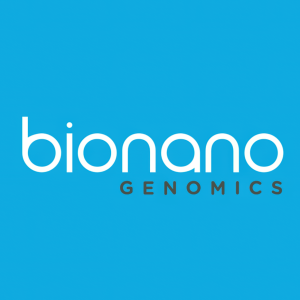Bionano Announces Publication of Interim Readout from Second Phase of Clinical Trial Analyzing Optical Genome Mapping as Standard of Care (SOC) for Prenatal Testing
- Pre-print publication from Levy, et al. describes the second phase of a multisite evaluation and validation of optical genome mapping (OGM) that is designed to measure the workflow’s accuracy and clinical utility compared to classical cytogenetic methods
- OGM data from 342 unique cases (419 datapoints) were analyzed and reported in the pre-print, including 123 samples from phase 1 of the study, which was reported in a pre-print publication in December 2022
- Phase 2 results show that OGM demonstrates comparable results to classical cytogenetic methods, with sensitivity of
99.2% , specificity of100% , overall accuracy of99.6% and overall concordance of100% - Phase 2 of the study also showed that for 215 out of 219 cases (
98% ) where at least two classical methods were required to meet the current standard of care (SOC) in prenatal constitutional genetic testing, a single OGM analysis was sufficient to meet the same standard. 59 out of 219 cases (27% ) used three classical cytogenetic methods to meet the SOC and OGM was again sufficient with just a single assay - A key conclusion of the authors is that OGM may serve as a stand-alone and promising alternative assay in prenatal diagnosis, distinct from classical cytogenetic methods, due to its performance and its ability to identify all classes of relevant structural variants (SVs) on a genome-wide basis and at high resolution
SAN DIEGO, Jan. 24, 2024 (GLOBE NEWSWIRE) -- Bionano Genomics, Inc. (Nasdaq: BNGO) today announced the publication of the second interim report from an ongoing clinical trial designed to support establishing OGM as part of standard of care (SOC) in diagnosis of genetic disease for prenatal subjects. This publication reports on the prenatal genetic disease clinical trial program to evaluate OGM as an alternative to SOC workflows. This second interim readout is designed to evaluate endpoints connected to analytical performance using an expanded dataset in key areas of technical performance and clinical utility of OGM.
Study Design
The study is an Institutional Review Board (IRB)-approved, multicenter, double-blinded trial with samples from 219 unique retrospective (57) and prospective (162) clinical research subjects. All samples had been previously tested with traditional methods including karyotyping (KT), fluorescence in situ hybridization (FISH) and chromosomal microarray (CMA). The samples were from cases with reported pathogenic findings (82), likely pathogenic findings (1), cases with known variants of uncertain significance (19), and cases with no known reportable variant (117).
The sites conducting the study and their principal investigators are as follows:
- Greenwood Genetic Center (Dr. Roger Stevenson, Dr. Steven A. Skinner, Dr. Barbara DuPont)
- Cincinnati Children’s Hospital Medical Center (Dr. Jie Liu)
- University of Rochester Medical Center (Dr. Anwar Iqbal)
- University of California San Francisco (Dr. Aleksander Rajkovic)
- Columbia University Irving Medical Center (Dr. Brynn Levy)
- Quest Diagnostics Nichols Institute (Dr. Peter Bui)
- Augusta University (Dr. Ravindra Kolhe)
- Brigham and Women’s Hospital (Dr. Sam Brody)
Key Findings
This publication describes OGM performance metrics including performance, robustness and reproducibility in prenatal samples when compared to SOC methods.
Key findings for the technical endpoints were reported as follows:
- Results of OGM analysis were comparable, in a single assay, to the results of two separate standard of care (SOC) tests needed to reach a diagnosis in
71.2% of cases (156/219) and to three separate SOC tests needed to reach a diagnosis in26.9% of cases (59/219) - Compared to CMA, FISH and KT combined in this cohort, OGM had the following performance:
- Concordance:
100% - Sensitivity:
99.2% - Specificity:
100% - Positive Predictive Value (PPV):
100% - Negative Predictive Value (NPV):
95.5% - Overall accuracy:
99.6%
- Concordance:
Key Takeaways
The publication concluded that these results demonstrate the technical performance and utility of the OGM workflow from DNA isolation through data analysis when compared to SOC methods. The authors noted that a single approach, like OGM, can allow genetic analysis laboratories to provide results that are comparable or even more informative than classical methods with a rapid cost-effective solution.
“We are pleased to see results from the expansion of our prenatal clinical study, with a total of 342 subjects analyzed in this study and with an interim readout that shows OGM is highly concordant with SOC methods. We look forward to the investigators proceeding with analysis and reporting for our total study enrollment of 500 unique samples,” commented Alka Chaubey, PhD, FACMG, chief medical officer of Bionano.
“The use of OGM for the analysis of prenatal samples is an area of critical importance, especially for patients who are currently subject to a costly, time-consuming and labor-intensive process to get results. The results from the second phase of our prenatal clinical study demonstrate the workflow’s strong performance and potential ability to provide answers from a single assay compared to the two to three assays required with the traditional methods commonly used today,” commented Erik Holmlin, PhD, president and chief executive officer of Bionano. “This expanded dataset provides a more comprehensive evidence-based understanding of the potential for OGM’s progression towards integration as a tier-one cytogenomic diagnostic technique. We are thrilled with the authors’ recommendations for inclusion of OGM in the SOC testing in prenatal genetic analysis and these studies can provide important supporting data.”
The publication can be found online at https://www.medrxiv.org/content/10.1101/2023.12.22.23300469v1.full-text.
About Bionano
Bionano is a provider of genome analysis solutions that can enable researchers and clinicians to reveal answers to challenging questions in biology and medicine. The Company’s mission is to transform the way the world sees the genome through OGM solutions, diagnostic services and software. The Company offers OGM solutions for applications across basic, translational and clinical research. Through its Lineagen, Inc. d/b/a Bionano Laboratories business, the Company also provides diagnostic testing for patients with clinical presentations consistent with autism spectrum disorder and other neurodevelopmental disabilities. The Company also offers an industry-leading, platform-agnostic software solution, which integrates next-generation sequencing and microarray data designed to provide analysis, visualization, interpretation and reporting of copy number variants, single-nucleotide variants and absence of heterozygosity across the genome in one consolidated view. The Company additionally offers nucleic acid extraction and purification solutions using proprietary isotachophoresis technology. For more information, visit www.bionano.com, www.bionanolaboratories.com or www.purigenbio.com.
Unless specifically noted otherwise, Bionano’s OGM products are for research use only and not for use in diagnostic procedures.
Forward-Looking Statements of Bionano
This press release contains forward-looking statements within the meaning of the Private Securities Litigation Reform Act of 1995. Words such as “can,” “may,” “potential” and similar expressions (as well as other words or expressions referencing future events, conditions or circumstances) convey uncertainty of future events or outcomes and are intended to identify these forward-looking statements. Forward-looking statements include statements regarding our intentions, beliefs, projections, outlook, analyses or current expectations concerning, among other things: the ability and utility of OGM to provide results highly concordant with classical cytogenetic methods (including CMA, FISH and KT) for genetic diseases from prenatal samples; the ability and utility of OGM to detect potentially pathogenic variants in prenatal samples missed by classical cytogenetic methods; the ability and utility of OGM to provide variant information comparable to the variant information from two or three classical SOC cytogenetic methods; the ability and utility of OGM to become a tier-one diagnostic technique for genetic disease diagnosis of prenatal samples; and our ability to drive adoption of OGM and our technology solutions to be used as part of the analysis for prenatal samples. Each of these forward-looking statements involves risks and uncertainties. Actual results or developments may differ materially from those projected or implied in these forward-looking statements. Factors that may cause such a difference include the risks and uncertainties associated with: the timing and amount of revenue we are able to recognize in a given fiscal period; the impact of adverse geopolitical and macroeconomic events, such as recent and potential future bank failures, inflation, supply chain disruptions, global pandemics and the ongoing conflicts between Ukraine and Russia and Israel and Hamas, on our business and the global economy; general market conditions; changes in the competitive landscape and the introduction of competitive technologies or improvements to existing technologies; changes in our strategic and commercial plans; our ability to obtain sufficient financing to fund our strategic plans and commercialization efforts and our ability to continue as a “going concern”; the ability of medical and research institutions to obtain funding to support adoption or continued use of our technologies; study results that differ or contradict the results mentioned in this press release; failure of the ability and utility of OGM to provide results highly concordant with classical cytogenetic methods (including CMA, FISH and KT) for genetic diseases from prenatal samples; failure of the ability and utility of OGM to detect potentially pathogenic variants in prenatal samples missed by classical cytogenetic methods; failure of the ability and utility of OGM to provide variant information comparable to the variant information from two or three classical SOC cytogenetic methods; failure of the ability and utility of OGM to become a tier-one diagnostic technique for genetic disease diagnosis of prenatal samples; failure of our ability to drive adoption of OGM and our technology solutions to be used as part of the analysis for prenatal samples; failure of and the risks and uncertainties associated with our business and financial condition in general, including the risks and uncertainties described in our filings with the Securities and Exchange Commission, including, without limitation, our Annual Report on Form 10-K for the year ended December 31, 2022 and in other filings subsequently made by us with the Securities and Exchange Commission. All forward-looking statements contained in this press release speak only as of the date on which they were made and are based on management’s assumptions and estimates as of such date. We do not undertake any obligation to publicly update any forward-looking statements, whether as a result of the receipt of new information, the occurrence of future events or otherwise.
CONTACTS
Company Contact:
Erik Holmlin, CEO
Bionano Genomics, Inc.
+1 (858) 888-7610
eholmlin@bionano.com
Investor Relations:
David Holmes
Gilmartin Group
+1 (858) 888-7625
IR@bionano.com









